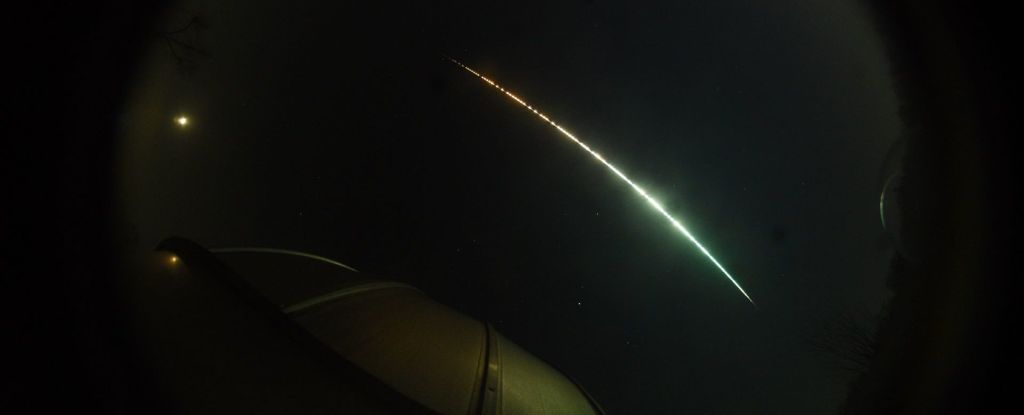Products You May Like
For just the sixth time in recorded history, astronomers managed to catch a glimpse of an asteroid before it slammed into Earth.
On 19 November 2022, nearly four hours before impact, the Catalina Sky Survey discovered an asteroid named 2022 WJ1 on an inbound trajectory. A network of telescopes and scientists sprang into action, accurately calculating exactly when and where on the globe the asteroid would fall.
This is excellent news. 2022 WJ1 was too small to do any serious damage, but its detection shows that the world’s asteroid monitoring techniques are improving, giving us a better chance of protecting ourselves from falling space rocks – the big ones that might actually do some damage.
Although space is mostly space, there’s a bunch of not-space in it, too. In the vicinity of Earth, that not-space is mostly asteroids that orbit the Sun in such a way that brings them close to Earth’s orbit. We call them near-Earth asteroids, and at time of writing, 30,656 of them have been cataloged.
Most of these asteroids are actually pretty small, and scientists are confident that we’ve found nearly all of them that are large enough to pose a significant hazard, studied them, and determined that none of them will come close enough within the next century to be a threat.
Still, it’s good to stay on top of what’s buzzing around in the space around us, and to hone our abilities to find sneaky rocks thinking of making a big entrance.
The detection of 2022 WJ1 was made at 04:53 UTC on 19 November 2022, by the Mount Lemmon Observatory, part of the Catalina network. It continued to monitor the object, taking four images that allowed astronomers to confirm the detection, and report it to the IAU Minor Planet Center at 05:38 UTC.
Those four images were enough to calculate the asteroid’s trajectory across the sky, with multiple impact monitoring programs finding that the rock had around a 20 percent chance of coming down somewhere in the North American continent.
Follow-up observations allowed scientists to refine their measurements, giving a time and a location. Bang on schedule, at 08:27 UTC, 2022 WJ1 was seen streaking across the sky as a bright green fireball, over the Golden Horseshoe region in Southern Ontario, Canada.
The discovery was the first ever predicted meteor to fall over a densely populated area, but the rock was not a danger. It measured about one meter (3.3 feet) across as it entered Earth’s atmosphere, making it the smallest asteroid yet observed prior to atmospheric entry to date.
Here it turned into a flaming bolide and shattered, falling to Earth as smaller pieces that mostly fell into the water of Lake Ontario. Most locatable pieces of the meteorite should be small pieces of debris; scientists are hoping to retrieve some of them to study the asteroid further.
The previous five asteroids detected prior to impact were 2008 TC3, which was around 4 meters across; 2014 AA, at 3 meters across; 2018 LA, also three meters across; 2019 MO at 6 meters across; and, just earlier this year, 2022 EB5, which was around 2 meters across.
The detection of 2022 WJ1, and the global coordination that tracked it, are a wonderful testament to how sensitive the technology has grown, and the magnificence of the human cooperation to better understand rogue space rocks.
And, of course, those observations represent a rare opportunity to study what happens to asteroids when they enter Earth’s atmosphere.
“This fireball is particularly significant as the parent meteoroid was observed telescopically before it hit the atmosphere. This makes it a rare opportunity to link telescopic data of an asteroid with its breakup behavior in the atmosphere to glean insight into its internal structure,” said astronomer and physicist Peter Brown of the University of Western Ontario.
“This remarkable event will provide clues about the makeup and strength which when combined with telescopic measurements will inform our understanding of how small asteroids break up in the atmosphere, important knowledge for planetary defense.”
Debris from 2022 WJ1 should be dark, with a thin and fresh fusion crust, and a grayer stony interior. Scientists are requesting that any suspicious fragments be reported to the Royal Ontario Museum.
